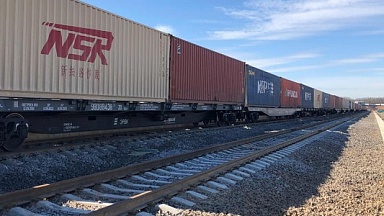As a first comment it was noted that the first ever numbered patent was for railway technology. Looking in more detail at patenting, railway technologies are not growing as fast as other transport technologies, particularly in the last five years. The most important origins of innovation efforts in terms of volume are currently the China and Russian Federation, which have been major players since 2009. China is a very strong filer of patents in all technologies, including railways. Japan has reduced its participation since 1990, while the United States of America have significantly fallen in recent times. Regarding the type of patent filers, most of the applicants for railway technologies are companies. There is an increase of academic share, but a reduction of entrepreneurs and small companies. Finally, the information and communication technology (ICT) revolution does not seem to have yet strongly impacted railways innovation, where technologies are sourced mostly endogenously.

The Shift2Rail initiative from the European Union has as five main objectives for the European rail sector: increase reliability and punctuality by 50 per cent, double railway capacity, halve life-cycle costs of transport, contribute to the reduction of negative externalities (noise, vibrations, emissions and other environmental impacts) and contribute to the achievement of the single European railway area. A System Architecture Approach has been adopted, requiring the development of Open System Interface («do not reinvent the wheel», interconnect existing systems) and identifying enablers (digital technologies, automation, and so on, but also new regulatory concepts and framework). The next generation of the Shift2Rail project, for the period 2020-2030, will have a revised governance and include the ERRAC vision 2050, associated with a simplification of the regulation and administrative processes.
The development of China-Europe freight corridors and container block trains, supported by the Coordinating Council on Trans-Siberian Transportation (CCTT), also illustrates the international efforts to foster innovation. The CCTT actively works on increasing the competitiveness of trans-Siberian railway, by coordinating the activities of market participants, implementing unified information technology and electronic document workflow in cooperation with customs authorities, providing effective technological cooperation for different types of transport and ensuring the conformity of railway and intermodal transport products with international standards for cargo safety. However, according to CCTT, challenges remain on the European side of the east-west-east route for transit development, due to the lack of rail freight funding, the lack of rolling stock and a low coordination of rail freight participants in terms of speed of cargo transportation.
The Austrian Federal Railways (ÖBB) also underlined that rail systems are expensive. Therefore, it is necessary to simplify the rail systems: railways need to tackle increasing system complexity and rising costs per unit despite a higher capacity utilization, new technologies and ongoing high investments. Innovation is key to the development of railways across Europe and the region remains at the forefront of introducing new technologies in the sector, thanks to national and international initiatives, both public and private in nature.



